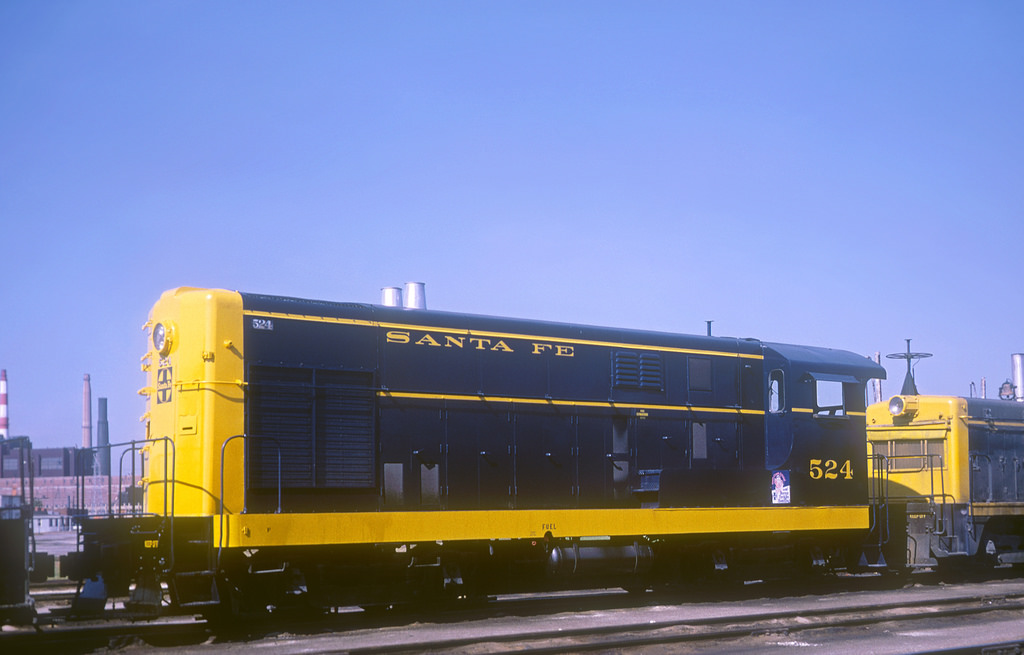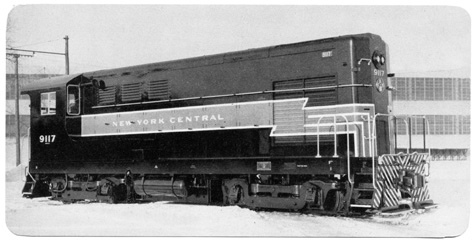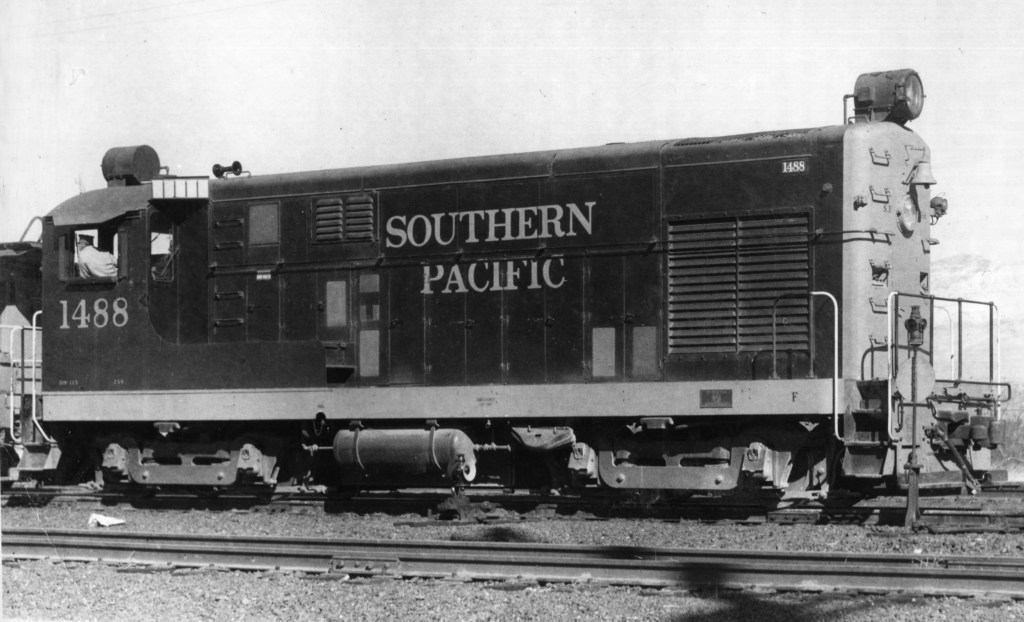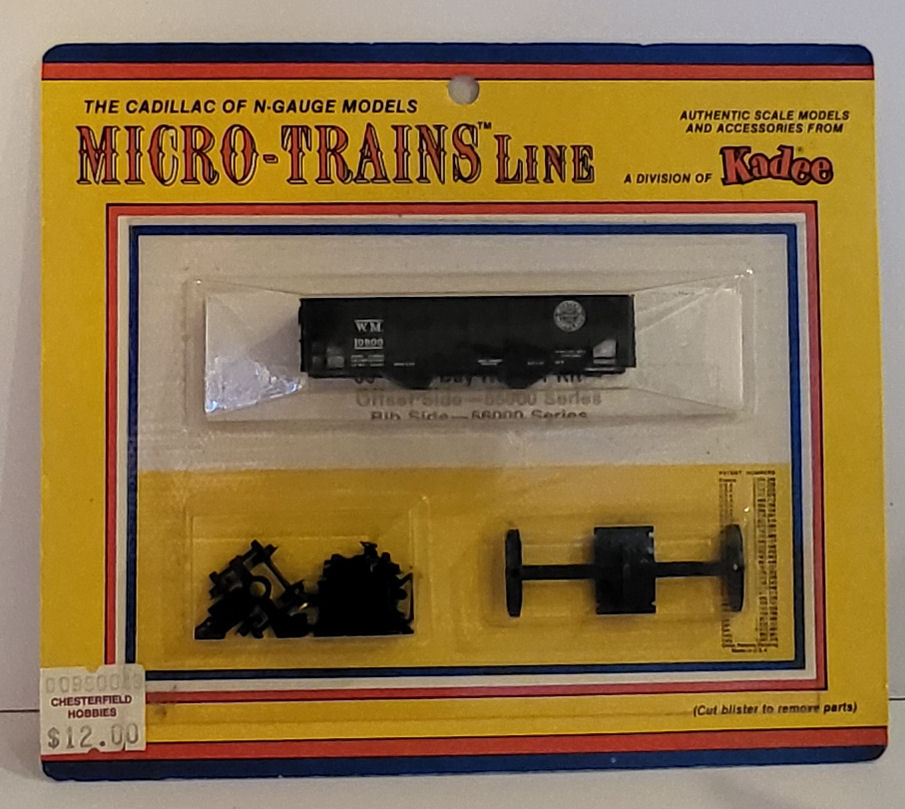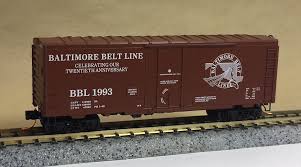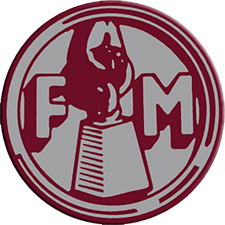History: The FM H-12-44 was a yard switcher produced by Fairbanks-Morse from May, 1950–March, 1961. The units featured a 1,200-horsepower (890 kW), six-cylinder opposed piston engine prime mover, and were configured in a B-B wheel arrangement mounted atop a pair of two-axle AAR Type-A switcher trucks, with all axles powered and geared for a top speed of 60 miles per hour (97 km/h).
A total of 303 units were built for American railroads, 30 were manufactured (between August 1951 to June 1956) by the Canadian Locomotive Company for use in Canada, and 1 unit was exported to Mexico.
Sixteen intact examples of the H-12-44 are known to survive today, all of which are owned by railroad museums or historical societies.
From Wikipedia
Read more on American-Rails.com
Full F-M H-12-44 data sheet on The Diesel Shop.
A total of 303 units were built for American railroads, 30 were manufactured (between August 1951 to June 1956) by the Canadian Locomotive Company for use in Canada, and 1 unit was exported to Mexico.
Sixteen intact examples of the H-12-44 are known to survive today, all of which are owned by railroad museums or historical societies.
From Wikipedia
Read more on American-Rails.com
Full F-M H-12-44 data sheet on The Diesel Shop.
Railroad/Company: Fairbanks Morse and Company was an American manufacturing company in the late 19th and early 20th century. Originally a weighing scale manufacturer, it later diversified into pumps, engines, windmills, coffee grinders, farm tractors, feed mills, locomotives and industrial supplies until it was merged in 1958. It used the trade name Fairbanks-Morse.
Fairbanks Morse and Company merged with Penn-Texas Corporation in 1958 to form Fairbanks Whitney Corporation. One of the successors of the original company is Fairbanks Morse Engine, a subsidiary of EnPro Industries, that continues to develop and sell opposed piston (OP) engine technology for marine applications.
Fairbanks Morse was the last builder to enter the diesel locomotive market in 1939 and the first to exit in 1958. While its opposed-piston engine design was not as successful in locomotive application as with marine ships its locomotives were nevertheless revolutionary for their time, so revolutionary that it would take twenty years after the builder’s exit from the market for railroads to become interested in similar models!
From Wikipedia
Read more on American-Rail.com
Fairbanks Morse and Company merged with Penn-Texas Corporation in 1958 to form Fairbanks Whitney Corporation. One of the successors of the original company is Fairbanks Morse Engine, a subsidiary of EnPro Industries, that continues to develop and sell opposed piston (OP) engine technology for marine applications.
Fairbanks Morse was the last builder to enter the diesel locomotive market in 1939 and the first to exit in 1958. While its opposed-piston engine design was not as successful in locomotive application as with marine ships its locomotives were nevertheless revolutionary for their time, so revolutionary that it would take twenty years after the builder’s exit from the market for railroads to become interested in similar models!
From Wikipedia
Read more on American-Rail.com
Item Links: We found: 1 different collections associated with Rail - Locomotive - Fairbanks Morse H-12-44
- Collection N Scale Model Trains: 11 different items.
Item created by: Alain LM on 2018-11-06 07:09:40. Last edited by Alain LM on 2018-11-06 07:14:05
If you see errors or missing data in this entry, please feel free to log in and edit it. Anyone with a Gmail account can log in instantly.
If you see errors or missing data in this entry, please feel free to log in and edit it. Anyone with a Gmail account can log in instantly.


